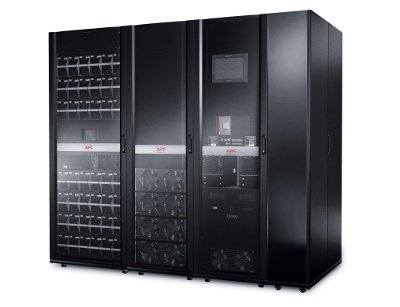Data center infrastructure vendor APC announced on Wednesday a new version of its InfraStruxure management software, which emphasizes comprehensive system visibility and management, as well as integration with other systems, including new capabilities for unified management of the data center, from underlying infrastructure to virtual servers.
The software is a core feature of the company's InfraStruxure architecture for open, vendor-neutral management platform for physical data center infrastructure. APC announced a new generation of the architecture on Wednesday, which it said would reduce time and complexity of infrastructure design and installation process.
While new management software features are core to the new architecture, APC also unveiled new physical infrastructure elements as part of the announcement. They include new double-conversion UPS systems: Symmetra PX 100kW, 250kW and 500kW with internal modularity. There is also a new modular PDU;a new InRow OA and refrigerant distribution unit for overhead cooling;and new NetShelter SX enclosures for network gear.
New features of the InfraStruxure management software provide active and open management for power, cooling, racks and security systems. The solution is able to fully integrate with enterprise and building management systems, as well as with management systems for virtualized IT environments.
Soeren Brogaard Jensen, VP of enterprise software at APC, said the solution addressed the complexity of managing data center infrastructure in a virtualized environment with dynamic loads. "By using APC's InfraStruxure Management Suite, IT managers can finally implement virtualization without worrying about whether their physical infrastructure can support the nomadic loads," he said in a statement.
New integration capabilities include communication with Microsoft System Center Virtual Machine Manager 2008 R2. This allows for automatic VM migration to desirable hosts and provides visibility into the relationships between virtual and physical servers, while having awareness of the state of the critical infrastructure. If part of the infrastructure is impacted in a negative way, the manager can automatically move virtual machines to non-impacted areas within the data center.
The manager includes a new application called Data Center Lab ÔÇô a project management tool for designing a new data center or upgrading an existing one. The tool allows for simulation of changes and future scenarios, including addition of new IT gear, floor and rack layouts, as well as creation of inventory lists for data center change or build projects.
There is also an updated Impact Analysis application for instant infrastructure overview, which includes UPS, power distribution and cooling. The overview is vendor-agnostic, alerting managers of abnormal temperature or other events within the infrastructure that may affect the IT equipment. Capabilities also include inventory management, device-failure notifications and recommended resolutions for issues, such as virtual-machine migration.
Reporting capabilities of the new InfraStruxure Efficiency 1.1 include monthly energy consumption of subsystems, CO2 emissions, Power Usage Effectiveness (PUE) and Data Center Infrastructure Efficiency (DCIE). Carbon footprint reporting functions include automatic correlation with CO2 emission data of the local utility.
Finally, InfraStruxure Capacity's new network management tool offers mapping and documenting of fiber and copper networks from servers to switches and routers to help IT managers document connectivity and manage their network structure and usage.

